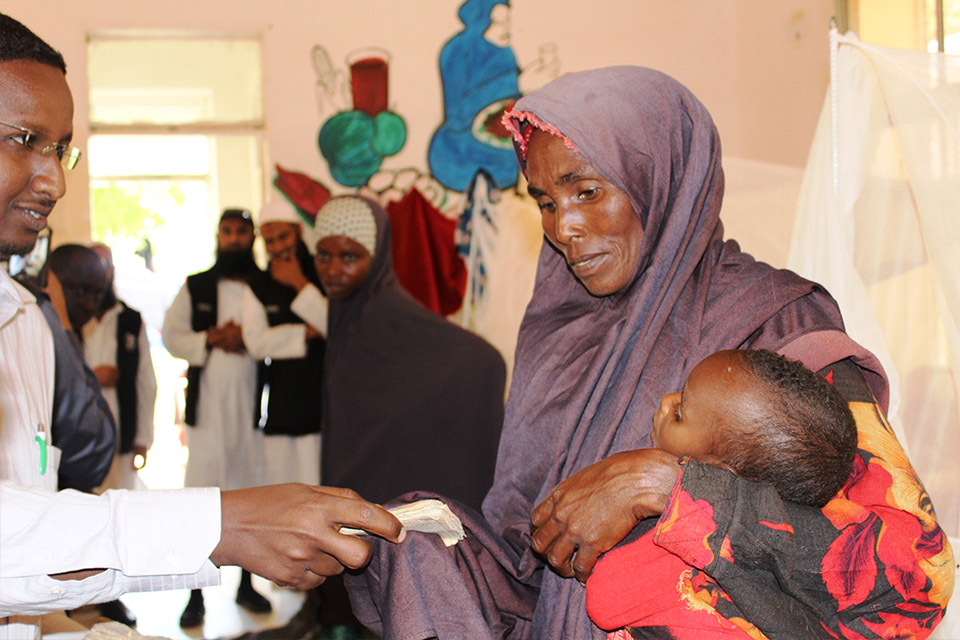Azhar Vadi | 18 June 2017 | Images: Salaamedia
Some 243km slightly north west of Mogadishu, exists the ancient African town of Baidoa. Pre-historic rock art has recently been found on the outskirts of the city. The history in these parts of the continent runs deep.
Being the capital of Somalia’s Bay region, Baidoa has always been a prized treasure for various conquering forces. In recent years it has changed hands several times between several warring groups, each trying to take advantage of the weak, and at times non-existing, Mogadishu based government.
The city is currently protected by local militiamen as well as Ethiopian soldiers who helped drive out Al Shabaab in 2012. While people fear the violence and AK47’s are common on the streets of Baidoa, it is the drought and famine that has shaken the life, literally at times, out of the city’s residents.
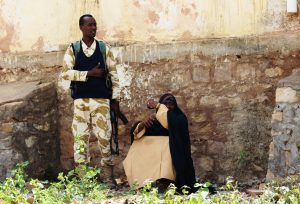
Image: Salaamedia
There has been little to no rain for hundreds of kilometres to the north, west and east of the city and internally displaced Somalis have been slowly trekking into Baidoa and establishing refugee camps, often with nothing more than the clothes on their backs, putting pressure on the resources of the townsfolk.
This region has traditionally been the bread basket of Somalia, responsible for producing the majority of the much sort after sorghum crops. If Baidoa ever failed to deliver, the effects would be felt across the length and breadth of Somalia.
It was to this city that we traveled along with the Al Imdaad Foundation, one of South Africa’s largest NGO’s and humanitarian relief organisations, their partners in Somalia – the Zam Zam Foundation and a representative of the Turkish based NGO, IHH.
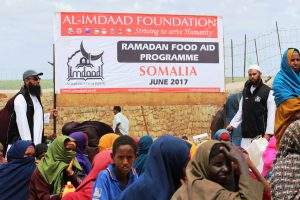
Image: Salaamedia
Our chartered plane, an old Russian 15-seater headed up by two Ukrainian pilots, slowly touched us down upon the airport tarmac in Baidoa on 18 June 2017, the only remaining stretch of tar it seemed in the entire city. Every other road has become incredibly uneven gravel strips.
Travelling in Somalia’s capital, Mogadishu, to various food distribution and orphan projects over the preceding days had been an eye-opening experience. But nothing could have prepared us for the emotional tsunami that hit us in Baidoa.
The first point of interaction took us to the edge of the town where hundreds of dome shaped structures made out of sticks and pieces of material were lined up, each touching the next. In it, entire families at times took shelter from the searing heat and dry winds. Thousands of tiny dots, each a little tent, could be seen from the Rusian skedonk as we landed and took off.
“There are so many children all over. How does that even happen in tents this small?” a member of our delegation whispered observing the multitude of children running around as we walked through one of the camps.
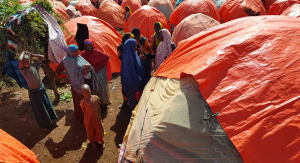
Image: Salaamedia
Dozens of people came out just to see the foreigners who had arrived in their neighbourhood. Not a single one asked for assistance. They just silently watched us. Many of the tent residents have walked or traveled for hundreds of kilometres to reach Baidoa in search of food. Their faraway regions of the country have already been consumed by the drought and have become uninhabitable.
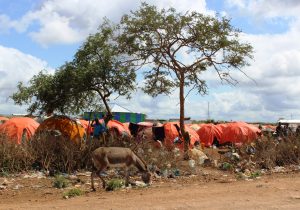
Image: Salaamedia
An aged lady, Habeeba, agreed to an interview. The wrinkly women traversed for two days in a dilapidated vehicle to reach Baidoa. “I don’t know the amount of kilometres,” she told Salaamedia but it took two days to get here. “There is no rain, the animals are dying. We are forced to come here.”
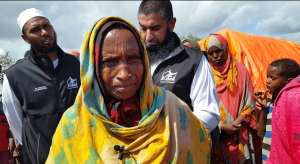
Image: Salaamedia
She was part of a community that received 12000 litres of fresh water though the efforts of the Al Imdaad Foundation. The precious resource was decanted into a simple hole in the ground lined with orange plastic. As soon as the water flowed out of the snaking pipes, tired arms used whatever container they could reach to scoop the water into 25 litre drums. Life had been restored, even if it was just for a short period.
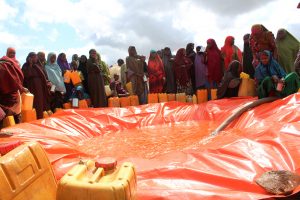
Image: Salaamedia
Our second stop took us to a paediatric hospital and it was here that the real effects of this seemingly never ending drought have chiseled their marks. Mothers with malnourished children suffering from a range of sicknesses filled the beds of the bursting health centre. A thin mattress and overhanging mosquito net were some of the few amenities provided for their solace.
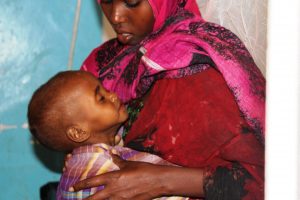
Image: Salaamedia
Health workers, doctors and nurses have been trying their best to decrease the mortality rate among the children. “Previously three or four kids would die every month due to malnutrition, but slowly this is changing,” a nurse commented.
According to the United Nations Office for the Coodination of Humanitarian Affairs (OCHA), 6,7 million people were in need of humanitarian aid in Somalia as of February 2017. A further 363 000 acutely malnourished children, below the age of 5, have totally drained the minuscule health capacity of this impoverished country.
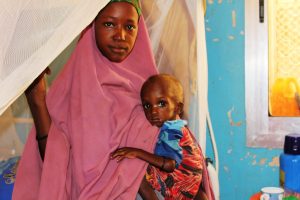
Image: Salaamedia
Despite the emergency food aid delivered by organisations like Al Imdaad Foundation on this trip to Baidoa and Mogadishu, so much more still needed to be done. Representative for the organisation, Moulana Muhammad Motala said they were determined as ever to increase their efforts towards relief aid for Somalia. “No matter what the threat, no matter what the circumstance, we will deliver aid to these people in need, inshallah (God willing).
The country and its people have pleaded for everyone to pray that the rains fall soon upon their cracked lands. “If the rains come, 90 percent of these people will return to their homesteads. They want to go home and live a life of dignity,” said Omar Jama, the deputy CEO of the Zam Zam Foundation.
